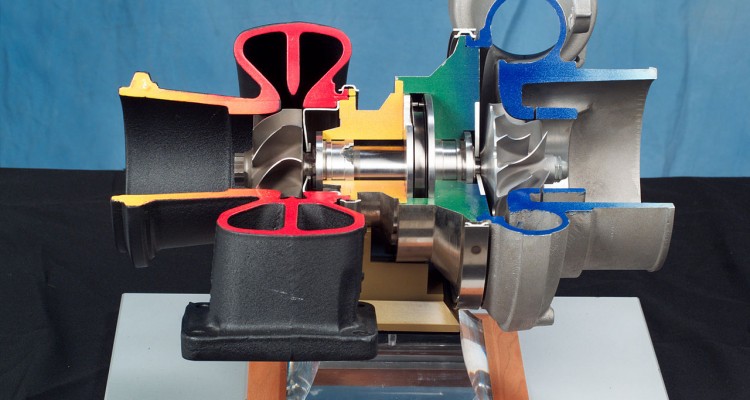How turbochargers work?
By Omar C.
We’ve all asked this question at some point, often getting a myriad of different answers, ranging from “it takes exhaust gasses and makes more power” to “you need to understand Fluid Dynamics first”.
So how do we answer this seemingly simple question?
Let’s first take a look at this video:
Having seen that, let’s go over the basics of how turbochargers work.
Any internal combustion engine is in essence an air pump, specifically, a positive displacement one; meaning the exhaust manifold pressure will always be a positive number i.e. never a vacuum (quite the contrary to an intake manifold).
This exhaust pressure is collected in the manifold and sent to the Turbine Housing, this forces the exhaust gasses to spin or “spool up” the turbine.

The Turbine Housing.
While the Turbine spins, it drives the Compressor wheel through a Shaft; this shaft is suspended or held in place by Bearings, which are fed with an oil supply to keep them lubricated.
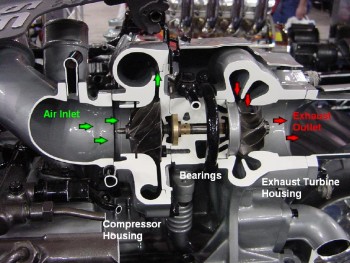
The shaft connects the Turbine with the Compressor wheel.
On the other side of the Turbocharger we find the Compressor Housing.
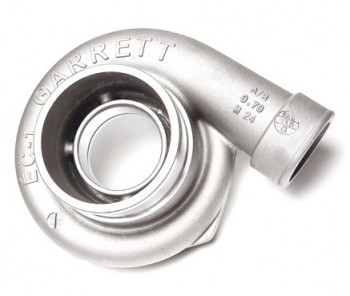
A typical Cast aluminum Compressor housing.
The Compressor wheel is what’s called a Centrifugal compressor, and it relies on super high speed or RPM’s to effectively compress air. This Compressor wheel draws air from the intake, and compresses it, making “boost”.
This high pressure air or “boost” can go through a heat exchanger known as Intercooler, which lowers the temperature of the air, making for denser and colder air, this air is then sent to the intake manifold.
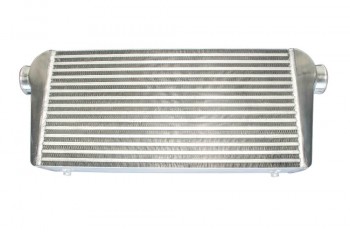
An Air-to-Air intercooler.
The pressurized air now enters the cylinders artificially raising the Compression Ratio, and thus allowing for more fuel to be burned, and in most cases, an increase in power and torque.
In turn, the increased amount of air in the cylinders means more exhaust gas pressure, which spools the turbocharger even faster, and the cycle continues.
But what happens if the exhaust pressure is too high, and the exhaust system can’t deal with the increase in volume?
Well, this is why we have Wastegates and Blow-Off Valves; both help solve the problem of overboosting i.e. putting too much pressure in our turbo system.
The Wastegate can be either integrated in the Turbo (called internal wastegate), or installed before the turbine housing, in the intake manifold (this is an external one).
In both cases, the Wastegate is a valve that opens up to relieve excessive exhaust gas pressure, preventing the Turbine from spooling up too quickly. This is very important as it protects not only the turbo but the engine itself from excessive backpressure.
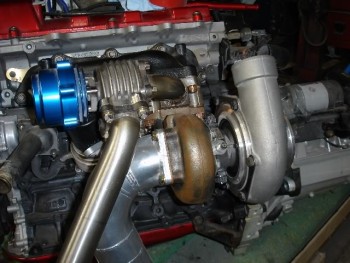
Example of an External Wastegate.
The Blow-Off Valve is placed before the intake manifold, and its job is to vent or release boost pressure when the engine slows down, for example during a gear change. The excess volume is released and the pressure drops to prevent engine damage.
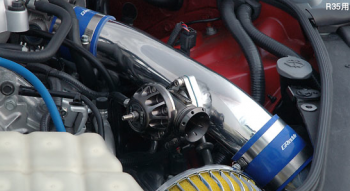
An aftermarket Blow-Off Valve.
There are a thousand ways to build a turbo system and a thousand more to modify and customize it; in this article we have covered the basics of how Turbochargers work, and how they affect the engine’s performance.
There is a whole world yet to be discussed when it comes to this particular flavor of forced induction; and we will be bringing more information to you, in the next installment of How turbochargers work.

